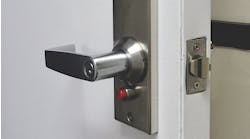Small schools and schools in rural areas can, and have, taken design steps to make their schools safer. Common among those designs are retrofitting entryways to “channel” people through the administrative offices; keeping all but one entrance into the school locked throughout the day; and mounting cameras in and around the school.
I recently had an opportunity to visit with a superintendent whose school district experienced a shooting that resulted in the death of several students. In the immediate aftermath of this tragedy, public meetings focused on physical security measures. As time went on, though, people realized that school design, while important, was secondary to creating school environments where relationships are of primary importance.
A look into the school shootings that have occurred in K-12 schools over the past 15 years finds that about 38 percent were perpetrated by “outsiders.” Putting in place design strategies such as those mentioned is important. But that means more than 62 percent of gun violence in schools involved students who attend them. Paying attention to a school’s climate and culture is clearly important.
This is where the challenges of the small school might differ from those in a larger school. In small schools, especially those in rural communities, it is not unusual for a shotgun or rifle to be carried in the trunk of a vehicle; students use them to hunt. Attitudes toward firearms are more casual, and accessibility is relatively easy.
From the perspective of developing relationships, it is more difficult to go unnoticed and get lost in the crowd in the small school when compared with a larger school. There is a greater likelihood that everyone knows virtually everyone else. Familiarity with classmates can result in a more relaxed, even passive attitude toward potentially dangerous behaviors. Aberrant behaviors are more difficult to detect.
That was the case in the district that I visited after the shooting. The student that brought the gun to school had a target in mind: a fellow student whom he believed had been picking on him. Yet, none of the students believed the shooter had been singled out in any way; nor had anyone noted the student’s change in behavior that had taken place over the previous summer months. No one found it important to share with an adult in the school the changes in the student’s attitude toward school or others.
A higher degree of comfort with firearms, familiarity with classmates, and a sense of “not in my school” can bring a more relaxed, inattentiveness to potential violence in smaller more rural schools than in a larger school.
So, the lessons that have been learned focus attention not only on school design, but also on school climate and culture. Strategies can include establishing support groups for children and teen adolescents who feel isolated from their peers; bringing in professionals trained in the early identification of children and young adolescents who might be disenfranchised from their peers; and starting programs developed specifically to reduce/eliminate behaviors such as bullying.
Finally, it is important to recognize that there is a connection between school design and building positive school environments that goes beyond entrances and cameras. Although an immediate response to school gun violence might be to create “lock down” facilities complete with cameras, and gated/guarded entries, new school designs can encourage positive school climates by creating areas where students and teachers can come together to work collaboratively formally and informally. Areas that are full of natural light and soft, soothing colors should be abundant.
Alone, neither school design nor creating learning environments rich in relationship-building is enough to prevent gun incidents. But, designing schools that support and enhance the opportunities for students to work with the professionals within the school will go a long way toward prevention.


